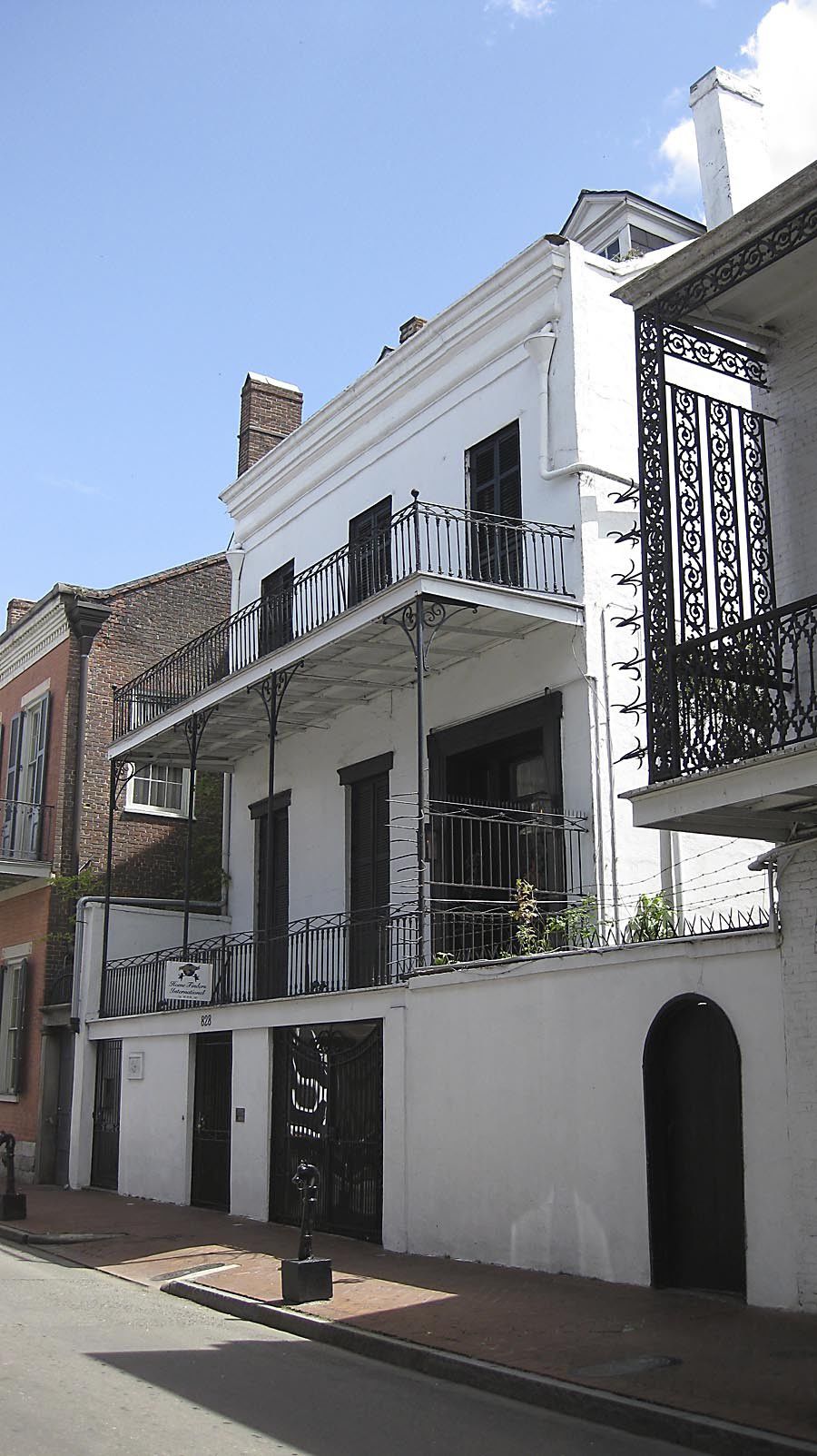
[Above, --- a house on St. Louis Street, New Orleans]
The song "House of the Rising Sun" has had many iterations. Some critics believe its meter and subject are rooted in a 16th-century British ballad. In 2007, Ted Anthony published Chasing the Rising Sun: The Journey of an American Song after more than a decade of research. The book follows the folk song's journey from its earliest recordings in 1933 by Clarence "Tom" Ashley to Georgia Turner to Woody Guthrie and Leadbelly in the 1940s, to Joan Baez and Bob Dylan in the '60s. The Animals recorded the most familiar version in 1964.
Today the song appears all over the world in many musical genres, including disco, country, jazz, reggae and hip-hop.
As the song traveled, it morphed to fit the region and gender of each singer and the mores of the time. Many believe the song is about a brothel, others a gambling hall and even a prison. According to Anthony, New Orleans could have appeared in the song because it was a big city full of temptations.
Some believe there was an actual House of the Rising Sun in New Orleans. The Hotel Villa Convento on Ursulines Street is rumored to be the legendary house. More common is the lore of a structure at 828 St. Louis St., which in the 1800s was said to be a bordello run by Madame Marianne Le Soleil Levant, whose surname is French for "rising sun." The current owner of that building, attorney Darlene Jacobs Levy, restored it to its original grandeur and hosted Animals singer Eric Burdon there. There was also a Rising Sun Hotel on Conti Street in the French Quarter. An ad in the Louisiana Gazette suggested that gentlemen would find "attentive servants" there. During a 2006 excavation of the site, archeologists found items suggestive of a bordello, and thus the mystique of the song lives on.


No comments:
Post a Comment